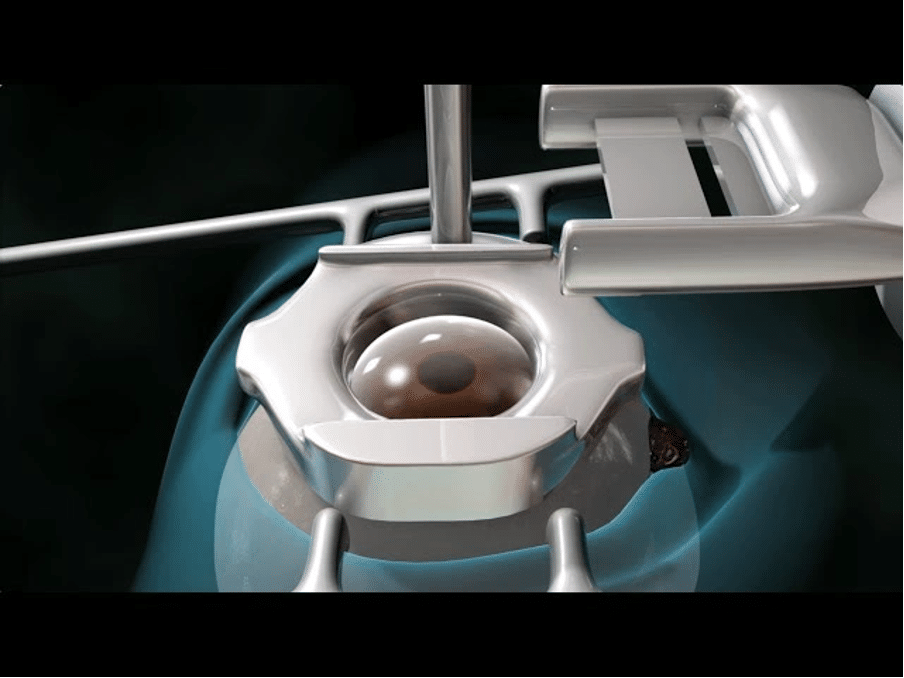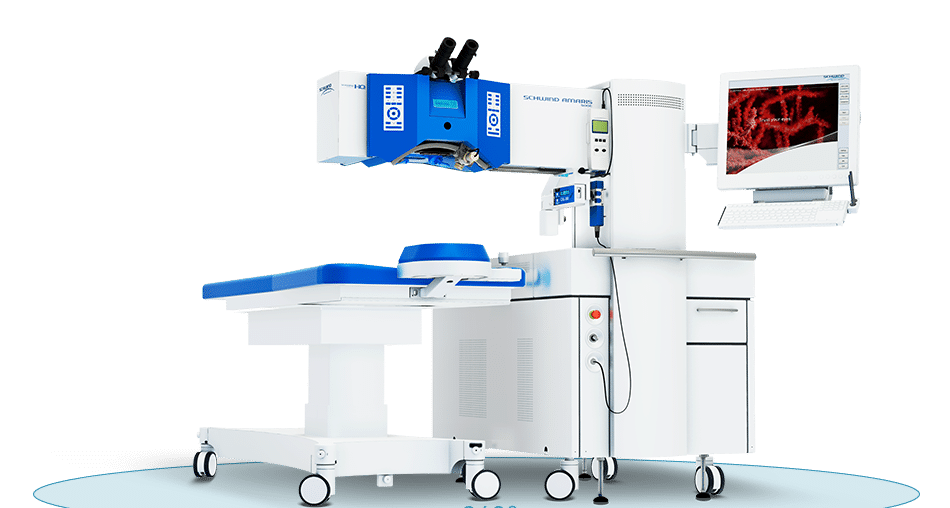Nervous about blinking during your Modern LASIK surgery? You’re definitely not alone. LASIK technology has made incredible progress over the last several years, and doctors have performed over 28 million procedures worldwide. Modern LASIK eye surgery now comes with advanced safeguards that take care of common worries like involuntary blinking and eye movement during the procedure.
The LASIK surgery we see in today’s digital world looks nothing like its earlier versions. Modern systems come equipped with high-speed eye-tracking technology that monitors even tiny eye movements with immediate precision. On top of that, the laser automatically adjusts or stops if your eye moves, blinks, or shifts during treatment. This ensures perfect precision right where it’s needed. These technological advances help patients recover faster and more comfortably, with less pain after surgery. This piece explains how these advanced safeguards protect you and why LASIK remains a safe choice even if you’re worried about blinking.

What makes blinking a concern during LASIK?
Many patients considering LASIK surgery ask a simple question: “What if I blink during the procedure?” This worry comes from our natural instinct to protect our eyes from anything that comes near them.
Why patients worry about blinking or moving
Feeling anxious about eye movement during surgery makes perfect sense. Our eyes have strong protective reflexes that make us blink, move away, or tear up when objects get close to them. Many patients also worry their sudden movements might affect their surgical results. They’re concerned about sneezing, coughing, or moving their head at vital moments.
How involuntary blinking is common and natural
You should know that involuntary blinking happens normally. People have a natural response called Bell’s phenomenon – our eyes roll upward when we blink to protect the cornea. Small eye movements happen all the time without our awareness. These tiny movements are just part of our eye’s normal function and happen thousands of times each second.
The role of patient comfort in modern LASIK
Modern LASIK procedures put patient comfort first. Your doctor applies numbing drops to your eyes before surgery. These drops reduce discomfort by a lot and help control the urge to blink. A small tool called an eyelid speculum keeps your eyes open gently during the procedure. Many clinics give mild oral sedation to help patients stay calm without getting sleepy. Your surgeon guides you through each step and tells you what to expect. Nothing comes as a surprise. This comprehensive approach to comfort explains why most LASIK patients say the same thing after surgery: “It was a lot easier than I thought it would be”.

How modern LASIK technology handles eye movement
Advanced technology makes up the foundations of modern LASIK procedures, especially when you have eye movement to manage. The days when patients needed perfect stillness during surgery are long gone.
Ultra-fast eye-tracking lasers explained
Modern LASIK systems use advanced eye-tracking technology that follows even the tiniest eye movements with amazing precision. These tracking systems take between 500 and 1000 photographs of your eye every second. This creates a detailed map that monitors position non-stop. The technology works at extraordinary speeds and responds in just 2-6 milliseconds. That’s about ten times faster than your eye can move.
Today’s tracking systems operate in multiple dimensions:
- Lateral movements (up/down)
- Horizontal and vertical shifts
- Rotational movements (cyclotorsion)
- Forward/backward movements (axial displacement)
This six-dimensional tracking capability keeps the laser perfectly arranged throughout your procedure, whatever subtle involuntary movements you make.
How the laser adjusts in real time
The laser system continuously adjusts to maintain perfect alignment once your eye is mapped and tracked. Each laser pulse coordinates with tracking data for immediate compensatory adjustments. The system recognises your eye’s unique pattern like a fingerprint which gives personalised treatment accuracy.
The tracking system talks directly to the laser and makes adjustments if you move slightly. You’ll need to focus on a point of light during the procedure, but the technology handles those unavoidable subtle movements that happen on their own.
What happens if your eye moves too much
Safety stays the top priority throughout the LASIK procedure. The laser automatically disengages if your eye moves beyond the safe tracking range. This automatic pause happens instantly and eliminates any risk of misplaced laser pulses. The system starts again only when your eye returns to the proper position. This ensures every treatment pulse lands exactly where intended. The built-in safeguard means even unexpected movements like sneezing won’t affect your results. So, modern LASIK technology offers multiple layers of protection against eye movement. This makes the procedure remarkably safe and precise even for patients worried about involuntary movements or blinking.
Advanced safeguards that keep you safe
Advanced laser technology works alongside several physical safeguards to keep your LASIK procedure safe and precise. Concerned you might blink during LASIK? Advanced tracking technology helps us line up your eyes to ensure safe, precise results.
Use of eyelid holders to prevent blinking
Your surgeon places a gentle device called a lid speculum between your eyelids to keep them open during the procedure. This small instrument stops you from blinking and only causes mild pressure not pain. The speculum also keeps your eyelashes away from the treatment area.
Laser pause mechanisms to add safety
Smart technology tracks your eye position during surgery. The laser automatically pauses if you make unexpected movements like coughing or sneezing. Your treatment picks up exactly where it left off once your eye moves back to the correct position. This smart pause-and-reposition system ensures treatment happens only in the planned areas.
Mild sedation to help you stay relaxed
Feeling anxious? You can take mild oral sedation to stay calm. This optional tablet starts working in about 20 minutes. In spite of that, you stay awake and can talk to your surgeon throughout the procedure.
Surgeon monitoring throughout the procedure
Your surgeon maintains full control over your LASIK treatment. They watch your eye movements carefully through surgical microscopes. They also guide you through each step and explain what you’ll experience next. Expert supervision combined with advanced technology creates multiple safety layers that make modern LASIK remarkably secure.

What to expect during your LASIK at Precision Vision London
Precision Vision London combines renowned surgical expertise with innovative technology to give you exceptional LASIK results.
Step-by-step overview of the procedure
Your procedure starts with numbing drops in your eyes. A gentle eyelid speculum keeps your eyes open. The surgeon creates a thin corneal flap and folds it back like a page in a book. You’ll focus on a specific light while the laser reshapes your cornea in less than 30 seconds per eye. The whole ordeal takes under 30 minutes. The surgeon repositions the corneal flap, which starts to reattach right away without stitches.
How we personalise your treatment
Your LASIK procedure starts with a complete consultation to assess your suitability and create your treatment plan. We use advanced wavefront technology to create a detailed three-dimensional map of your eye’s unique characteristics. This personalised approach and our use of innovative technology will give a treatment that meets your specific visual needs instead of a one-size-fits-all solution.
Recovery time and aftercare support
Patients see 90% of their best possible vision right after the procedure. Find the facts and book your LASIK consultation today: you can drive safely to your next-day follow-up appointment. Our steadfast dedication goes beyond the procedure itself. We offer a complete one-year aftercare programme with regular check-ups to monitor your healing. Our surgeons stay with you throughout your experience, from your original consultation through treatment and aftercare, to ensure optimal results.
Conclusion
Blinking during LASIK surgery worries many patients, but state-of-the-art technology has made this concern a thing of the past. Eye-tracking systems now follow your eye movements faster than your eyes can move. You can rest easy knowing that any involuntary blinking won’t affect your results. Modern LASIK procedures at Precision Vision London are precise and comfortable thanks to physical safeguards and state-of-the-art technology. A gentle eyelid holder keeps your eyes open while advanced tracking systems direct laser pulses exactly where needed, whatever tiny movements occur.
Many patients are amazed at how quick and comfortable the whole thing is. The procedure takes less than 30 minutes, and most patients see 90% of their best possible vision right away. This shows how far LASIK technology has come in the last few decades.
You don’t need to worry about staying still during your procedure. Your surgeon has complete control, and multiple safety systems can pause treatment if needed. On top of that, our complete one-year aftercare programme will give your vision the best chance to develop after treatment. Worrying about blinking during LASIK makes sense, but don’t let it stop you from getting clearer vision. Precision Vision London pairs expert surgical skills with the latest technology to give exceptional results. Book your consultation today and see firsthand how modern LASIK has revolutionised vision correction for thousands of UK patients.
Key Takeaways
Modern LASIK technology has revolutionised eye surgery with sophisticated safeguards that address every patient’s primary concern about blinking and eye movement during the procedure.
- Modern LASIK systems use ultra-fast eye-tracking technology that captures 500-1000 photos per second, adjusting laser placement in real-time faster than your eye can move.
- Physical safeguards including gentle eyelid holders prevent blinking, whilst automatic laser pause mechanisms stop treatment if excessive movement occurs.
- The entire procedure takes under 30 minutes with numbing drops for comfort, and most patients achieve 90% of their best vision immediately after surgery.
- Advanced wavefront technology creates personalised 3D eye maps, ensuring treatment addresses your specific visual needs rather than using generic approaches.
- Comprehensive aftercare programmes with regular check-ups monitor healing progress, with surgeons providing continuity of care throughout your entire journey.
The combination of cutting-edge technology, multiple safety layers, and expert surgical oversight means you can confidently pursue clearer vision without worrying about involuntary movements compromising your results.
FAQs
Q1. Can I blink during LASIK surgery? While it’s natural to worry about blinking, modern LASIK technology has safeguards in place. A gentle eyelid holder keeps your eyes open during the procedure, and advanced eye-tracking systems adjust for any small movements. If significant movement occurs, the laser automatically pauses until your eye is back in position.
Q2. How long does the LASIK procedure take? The entire LASIK procedure typically takes less than 30 minutes for both eyes. The actual laser reshaping of your cornea usually takes less than 30 seconds per eye. Most patients are surprised by how quick and comfortable the experience is.
Q3. What if I move my eye during the surgery? Modern LASIK systems use ultra-fast eye-tracking technology that follows even the slightest eye movements in real-time. The laser adjusts its position faster than your eye can move, ensuring precise treatment. If your eye moves too much, the laser automatically pauses until you’re back in the correct position.
Q4. How soon after LASIK can I see clearly? Most patients experience about 90% of their best possible vision immediately after the procedure. You’ll likely be able to drive safely for your follow-up appointment the next day. However, your vision may continue to improve over the following weeks as your eyes heal.
Q5. Is LASIK painful? LASIK is generally not painful. Your eyes are numbed with drops before the procedure begins. You might feel some pressure during the creation of the corneal flap, but this is typically described as mild discomfort rather than pain. Many clinics also offer mild oral sedation to help you stay relaxed throughout the procedure.
Authors & Reviewer
-
 Olivia: Author
Olivia: AuthorHi, I'm Olivia, a passionate writer specialising in eye care, vision health, and the latest advancements in optometry. I strive to craft informative and engaging articles that help readers make informed decisions about their eye health. With a keen eye for detail and a commitment to delivering accurate, research-backed content, I aim to educate and inspire through every piece I write.
-
 Dr. CT Pillai: Reviewer
Dr. CT Pillai: ReviewerDr. CT Pillai is a globally recognised ophthalmologist with over 30 years of experience, specialising in refractive surgery and general ophthalmology. Renowned for performing over 50,000 successful laser procedures.

